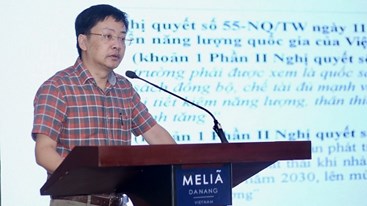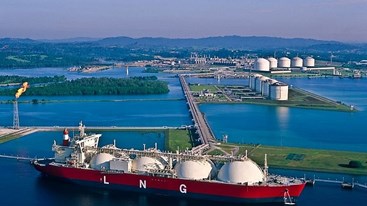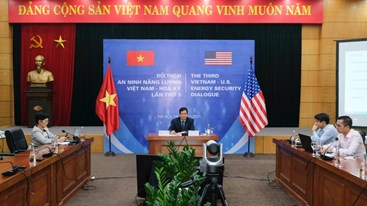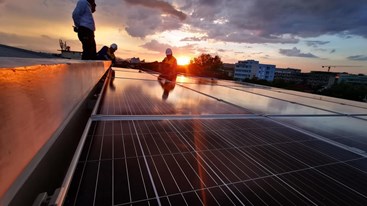Sunday, 19/05/2024 | 07:35 GMT+7
According to Prime Ministerial Decision 53/2012/QD-TTg, by 2015, road vehicles in seven major cities and provinces across the country will be subjected to use bio-fuel (traditional petrol mixed with a certain amount of ethanol). Vietnam Economic News’ Lan Phuong spoke with Deputy Director of the Science and Technology Department under the Ministry of Industry and Trade (MOIT) Nguyen Phu Cuong about the preparations for the bio-fuel distribution roadmap.
The prime minister has approved the bio-fuel development project by 2015 with a vision until 2025 for the development of bio-fuel in Vietnam. How far has the project been implemented to achieve this target? So far, most of the set targets have been carried out on time. There are four main tasks. The first one is to work out and draft mechanisms and policies and other legal documents to support the establishment and management of the bio-fuel industry such as a standard regulation system, preferential policies, guidelines on investment procedures and a mandatory roadmap for the development of bio-fuel. These documents have been completed, creating a legal framework to develop the Vietnam’s bio-fuel industry. Secondly, Vietnam has also conducted a number of experiments, research and technological applications. Firms have been able to master bio-fuel production and mixture technologies to international standard. Thirdly, Vietnam has begun to form its bio-fuel industry by producing first bio-fuel products in 2009 and has established Vietnam Bio-fuel Association with more than 10 members. To this moment, there are 169 petrol stations that sell the E5 bio-fuel across the country. PetroVietnam Corporation and Sai Gon Petro have also actively developed mixture systems in their stations and large petrol trading depots in Cat Lai, Dinh Vu and Tra Noc. Fourthly, awareness raising work has achieved positive results. In the coming time, promotion of biofuels will continue and act as a key solution so that the bio-fuel will become more popular with the public. From December 2014, several major provinces and cities will adopt biofuel. So, will those 169 petrol stations selling E5 bio-fuel be able to meet demand of these localities? At present, we have more than 13,000 filling stations but only 169 have sold bio-fuel. Experience from Thailand or the Philippines, countries that have similar weather conditions like Vietnam showed that a shift from the current fuel distribution system to bio-fuel distribution system requires not too long a period of time as the current system only needs to install some more equipment to guarantee the petrol quality and avoid contact with water. To prepare for the late 2014 deadline, groups like Petrolimex, PV Oil and Sai Gon Petro have mapped out specific plans to develop bio-fuel distribution and they have also committed to take action as planned. I think the there is enough time for their preparation, however, it will be quite a tough job as we have to accept new changes. How will the materials be prepared for production of this new bio-fuel? In 2012, we exported 2.3 million tonnes of dried cassava. In the first half of this year, we have also exported 1.2 more million tonnes while we still have to import petrol. Therefore, we have to take measures to keep raw materials for processing to produce this new product. In addition, we have to do a better job regarding material market regulations and get it under control. At several moments, dried cassava prices rocketed from VND2-3,000 per kg to VND5,500 per kilo within just two or three months and caused difficulties for businesses in working out a stable production plan. I think we do not lack materials if we adopt appropriate policies as with 2.3 million tonnes of dried cassava, we could produce about 800,000 tonnes of 100 degree alcohol which could be mixed to make eight million tonnes of E10 bio-fuel. We have already had a roadmap, and the biofuel is ready to be distributed. However, some plants have had to halt production due to many difficulties. What measures do we take to support them? Difficulties at the plants originated due to many reasons and one of them is slow domestic consumption. Therefore, we need to get people to understand and support the use of this new fuel. As Vietnam is now a WTO member, we can’t subsidize businesses through state funds so therefore, businesses have to make calculations and balance their expenditure and they should be patient as not every project can be profitable in the first year of operation. In addition, to support businesses, MOIT has constantly held working sessions to find out solutions that could help plants run at 65 percent of their designed capacity. To overcome general difficulties, we have to make more efforts in the coming time to promote the bio-fuel development.
By Lê My |


.png?w=367&h=206&mode=crop)
.jpg?w=367&h=206&mode=crop)




.jpg?w=367&h=206&mode=crop) Energy efficiency and conservation usage is an important aspect of the national energy development strategy
05/03/2024
Energy efficiency and conservation usage is an important aspect of the national energy development strategy
05/03/2024
 Challenges and Opportunities to promote energy efficiency market in Vietnam
Challenges and Opportunities to promote energy efficiency market in Vietnam
 The Ministry of Industry and Trade requests government agencies to coordinate in organizing Earth Hour 2024
The Ministry of Industry and Trade requests government agencies to coordinate in organizing Earth Hour 2024
 Consultation on Energy Efficiency Boiler Catalogue and Wood Drying Guideline
Consultation on Energy Efficiency Boiler Catalogue and Wood Drying Guideline
.png?w=367&h=206&mode=crop) Request for expression of interest - C2.1.13: Capacity Building on energy efficiency policies development
Request for expression of interest - C2.1.13: Capacity Building on energy efficiency policies development
 Son Ha Co., Ltd, applies energy efficiency and conservation measures
Son Ha Co., Ltd, applies energy efficiency and conservation measures
 Phuc Kien Co., Ltd., is effectively implementing energy-saving measures
Phuc Kien Co., Ltd., is effectively implementing energy-saving measures
 Request for expression of interest - C2.1.12: Independent monitoring of safeguards implementation
Request for expression of interest - C2.1.12: Independent monitoring of safeguards implementation